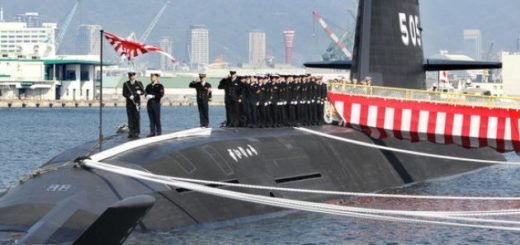Will Indo-Pacific become a battleground for the next Cold War?

Recently Mike Pompeo, US Secretary of State, in a press conference has said, “The US is shifting its military to face Chinese threats “. He also said that considering the threats posed by Communist Party of China on countries like India, Philippines, Australia and its belligerent behaviour in the South China Sea region, the US has acted appropriately in the situation. The threats which Mike Pompeo was talking about is clearly visible in the recent events like the clashes between the Indian and Chinese forces at the Pangong Tso and the Galwan Valley region, cyber-attacks on the Australian website and confrontations in the South China Sea region.

The US is also planning to move its 10,000 soldiers from Germany to the Indo-pacific region. According to China, the US has already deployed its 60% of the external forces which is approximately 50,000 soldiers in the South China Sea region. These forces are deployed in various US-allied countries like South Korea, Japan, Australia. Any security threat to these countries will automatically pull the US into the geopolitics because these countries have various defence pacts with the US and it provides the security umbrella to these countries.
The Indo-pacific region is getting more and more militarized day by day. The loggerhead of China is clearly seen by its previous acts like drawing “nine-dash line” in the South China Sea, claims on various Islands of Philippine, Japan and South Korea, constant intrusion in the territorial waters and Exclusive Economic Zones of other countries like Malaysia and Indonesia, seizing fishing boats of Vietnam, engaging in espionage like activities using Maritime Research and Survey vessels guarded by Chinese Coast Guard vessels pretending they are doing sea research. India is also looking forward to bolstering its footprint in the region by increasing its naval power which is clearly visible by its decision to purchase the Scorpion class submarines from France last year. The US and France have already sent submarines in the Indian Ocean and South China Sea region. Recently Iranian Revolutionary Guard Corps (Which have been recently designated as a terrorist organization by the US) also declared that they are planning to establish a permanent military base in the Indian Ocean. The recent killing of Qasem Soleimani, General of Iranian Revolutionary Guard, and the trade sanctions on Iran by the US have severely deteriorated the ties between both countries and precisely the presence of IRG in the region will not please the US.
The Balance of Power
According to the realist theory of International Relations, when any small power (here it is China) rises, the big power (here it is the US) tries to balance the small power and the result will be either the big power succeed by suppressing the small power else get suppressed by the smaller power.
In the present scenario, the Chinese influence is getting stronger in the region. Because of the close relationship between India and the US, China is also targeting India by its various strategies like the string of pearls where China is trying to circumvent India all around to strategically contain India. China is also trying to gain as many allies it can by using money and mussels’ power.
- North Korea: China is making allies with countries like North Korea who claim to have developed nuclear weapons.
- Iran: China has also made a huge investment in the oil refinery infrastructure in Iran. Iran also agreed for the deployment of Chinese troops for the protection of the refinery which later can be used by China as its defence purpose.
- Nepal: The Influence of China can be seen in the case of Nepal where it is closely involved with the communist government of Nepal and acting against India.
- Sri Lanka: Recently the Chinese government has taken a Sri Lankan port Hambantota on lease for 100 years which India was trying to acquire.
- Russia: To gain support from Russia, China is pumping huge money into the Russian economy and today the Russian economy is majorly dependent on China.
- Pakistan: China is constructing the China Pakistan Economic Corridor (CPEC) in the disputed territory between India and Pakistan.
Likewise, the Chinese have taken many countries into their confidence. In global organisations like WHO, UNESCO, China has taken over the vacuum created by the Trump administration.

To counter the Chinese strategy like a string of pearls, the US also has its own strategy like a pivot to Asia where the USA is trying to contain China by circumventing China. The Quad (Quadrilateral Security dialogue) where four countries viz. India, the United States of America, Japan and Australia have formed a group to deliberate on the issue of navigation and security in the region. The USA is also trying to balance China by having close ties with these countries. The NATO allies will also play a major role in the geopolitics in the region because they are also having enough power to change the balance of power in the political system. The recent phenomenon of Coronavirus has also acted against the Chinese as various countries including the US are targeting China for spreading the virus.
Polity is Guardian of Economy
As the multidimensional theory of power says “the power of the state is not only measured by its military power but also by its economic as well as the soft power “. The power of today’s China has its foundation in the economic growth which it has undergone in the last few decades. Only after being economically powerful, a country can be militarily powerful because to build a defence system, we need capital to invest in them. China is now a 14 trillion-dollar economy which is the world’s 2nd largest economy and is growing at a rate of 6.1 % per year. China is trying to boost its economy by the mega-project called Belt and Road Initiative in which it is trying to be the leader in the Global Value Chain.
The power of the US also lies in its gigantic economy of 21 trillion dollars and is the world’s largest economy. The economy of the US is growing between 2 – 3 % per year. Various economists say that even at this rate also, China will take at least 35 to 44 years to cross the US economic progress.
They both are trying to balance each other as well as trying to contain the economy of each other, also known as The Trade War. By the trade war, both countries are imposing various trade barriers and tariffs on the other country’s products by which trade between them is seriously getting affected. As clearly visible in the trade statistics between China and the US, there has been a big fall in bilateral trade since last year. Bilateral trade which was around 659 billion dollars in 2018 was reduced to 271 billion dollars in 2019. There is also a sharp trade deficit which is in favour of China. So, the trade war had majorly impacted china in a negative way as it was largely exporting to the US.

What can be India’s Role?
Given the geopolitical situation in the region, the involvement of the US will have a positive impact on India. The Chinese aggression in the region is day by day increasing and it is very crucial for India to contain China. India’s northern commandant is one of its strongest areas of defence where combat helicopters like Apache and Chinook are deployed, also the geographical terrain of Himalayas is hard to deal with, which acts as Indian defence. So, Chinese can’t wage a full-scale war against India in these areas but they can try it through the Indian Ocean regions because the Chinese navy is comparatively stronger than the Indian Navy.
Having a comparative outlook of both the navy, here China has little advantage. India is also trying to make its navy stronger and aiming to have 200 ships, 500 aircraft (majorly Tejas aircraft made by India) and 24 attack submarines. While India currently has only 132 ships, 220 aircraft and 15 submarines on the other hand Chinese have currently 70 submarines. So, regarding the ocean part India currently needs strategic partners to counter China and here comes the role of the US.
In the past few years, India-US relations are continuously improving and one of the major factors of this is the common threat to both i.e. China. US is also planning to join India in the G11 ( which the US is planning to form, whose aim will be to counter China ) and D10 ( democracy of 10 ) which will be a group of 10 democratic countries that will prevent Chinese company to enter into their country, in the field 5G technology. India is also signing various defence pacts with the US like:
- LEMOA (Logistics Exchange Memorandum of Understanding): which is regarding the mutual logistics support during the war and peacetime.
- COMCASA (Communications Compatibility and Security Agreement): This will help Indian and US defence to communicate with each other as well as data sharing and coordination.
- GSOMIA (General Security of Military Information Agreement): By these India and US defence manufacturing units can collaborate with each and manufacture defence equipment.
Also, the military bases of the US in the region like in Diego Garcia Island, Guam Island can help India to strengthen its defence because India had Signed LEMOA by which India can now use these bases whenever needed. The US is also now India’s largest trading partner and the good thing about the bilateral trade is that India is exporting more to the US than the US counterpart and the trade is also continuously rising.
Way Forward
Sustainable peace in the region is the only way for the overall development in the region. The foreign policy of China has changed dramatically from Mao Zedong’s soft power policy to Xi Jinping’s encroaching policy, India will deal with China in an appropriate manner. Over-dependence on the US will harm India in the long run. As we know in the realm of International Relation there are no permanent friends or enemies, there are only permanent interests. So, India has to be ATMA-NIRBHAR (Self-reliant) in the realistic world


















